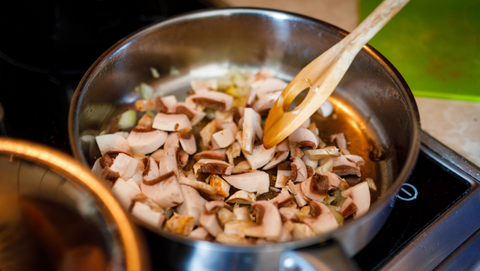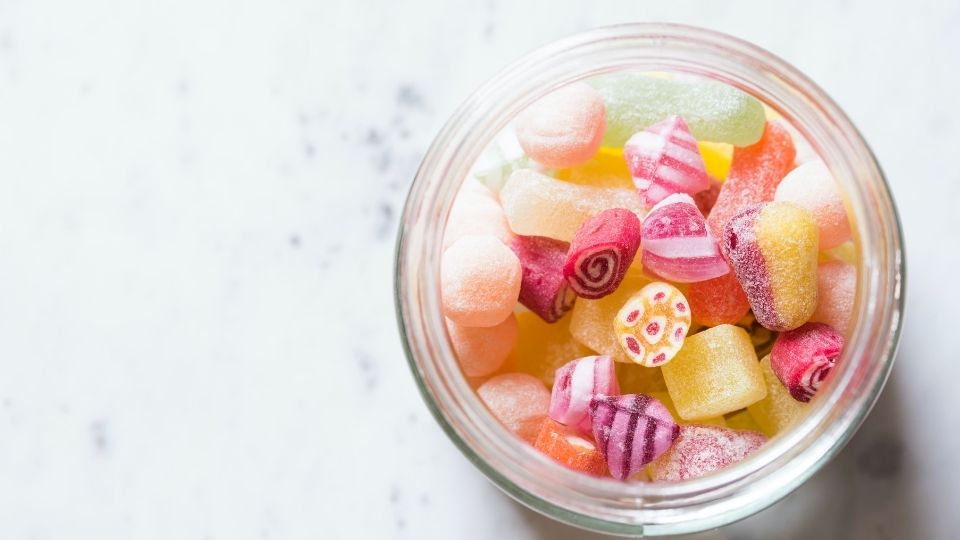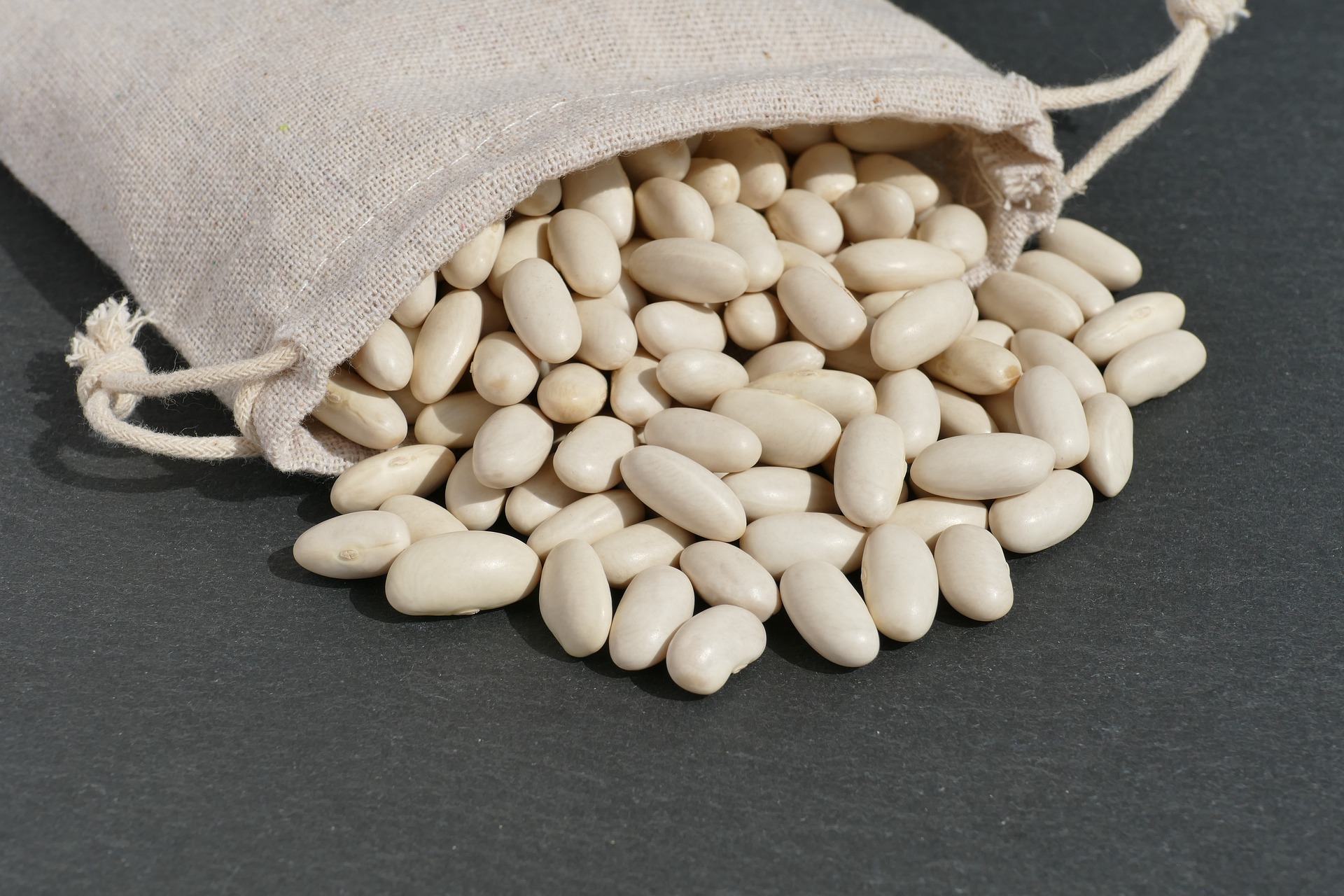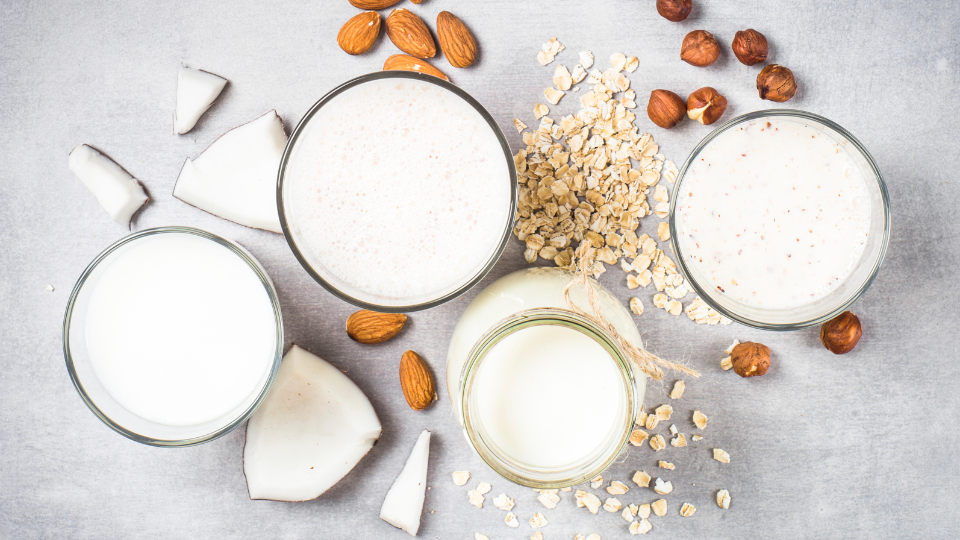Fruit and Vegetable Guide Series: Mushrooms

Availability: Mushrooms should be purchased from a reputable grower or grocer instead of hunting them yourself, as there are many poisonous mushrooms. Incorrectly identifying a mushroom can lead to serious health problems or even death. Mushrooms are available year around and in different varieties.
Eating: Mushrooms are very similar to meats and other vegetables. Virtually any and all seasonings go well with mushrooms.
Selecting: Select mushrooms that look firm, moisture-free (not dry), that have unblemished caps, and are free of mold. For best results place purchased loose mushrooms in a paper bag in the refrigerator, airtight plastic bags tend to retain moisture and will accelerate spoilage. Properly stored mushrooms will last for approximately 5 days.
Cleaning and Preparing: Clean mushrooms only when you are ready to use them. Remove any bits of debris on the surface, rinse with cold running water or gently wipe the mushrooms with a damp cloth, paper towel or soft brush.
- Preparation Hint: To retain the color squeeze a small amount of lemon juice onto the mushrooms.
Storing: Mushrooms keep for up to a week in the refrigerator. Keep mushrooms in the original packaging until ready to use. Once opened, store mushrooms in a porous paper bag. This will give the mushrooms a longer shelf life.
Cooking: Mushrooms are very versatile and can be eaten raw or cooked whole, sliced or chopped. Certain varieties like shiitake and portabella must have their stems discarded or used as a flavoring agent, as they are often tough.
 Sautéed: Cut mushrooms in slices and add to a pan melted butter or oil. Sautee mushrooms until liquid is gone or until golden brown.
Sautéed: Cut mushrooms in slices and add to a pan melted butter or oil. Sautee mushrooms until liquid is gone or until golden brown.- Roasted: Combine salt, pepper and garlic with whole mushrooms. Bake in the oven at 400 degrees for 30 minutes or until golden brown.
- Microwave: Add mushrooms to a microwave safe bowl, cover and cook on high for 2 to 3 minutes.
- Grilling and Broiling: This works best if larger mushrooms are used. Brush oil on the mushrooms until moist, add salt and pepper, grill or broil for 4 to 6 minutes on each side. If you want to add mushrooms to a stew or braise, consider sautéing them first. Mushrooms tend to shrink as they cook, and a long stewing process may not give you the results you were looking for.
Nutrition Highlights: Mushrooms are high in selenium, riboflavin, niacin potassium and pantothenic acid. Mushrooms are fat free and low in calories.
Preserving: Mushrooms can be frozen, but they must be cleaned, cooked, and placed in a ½ cup or 1 cup container to freeze. Frozen mushrooms will last several months. Fresh mushrooms should never be frozen, but sautéed mushrooms can be frozen and stored for up to a month. Mushrooms can be canned or dried.
References
- http://health.learninginfo.org/nutrition-facts/mushrooms.htm
- https://foodprint.org/real-food/mushrooms/
- http://fsi.colostate.edu/mushrooms/
Authors
Susan Haws, Extension Assistant Professor
Guide Editors: Heidi LeBlanc and Debra Christofferson
Additional Editors: Marie Stosich, Gayla Johnson, Eileen Milligan
*This publication is a part of a series created by Create Better Health and Utah State Extension Employees. It has been reviewed and updated to include current evidence-based research and recommendations.
Related Nutrition Articles






